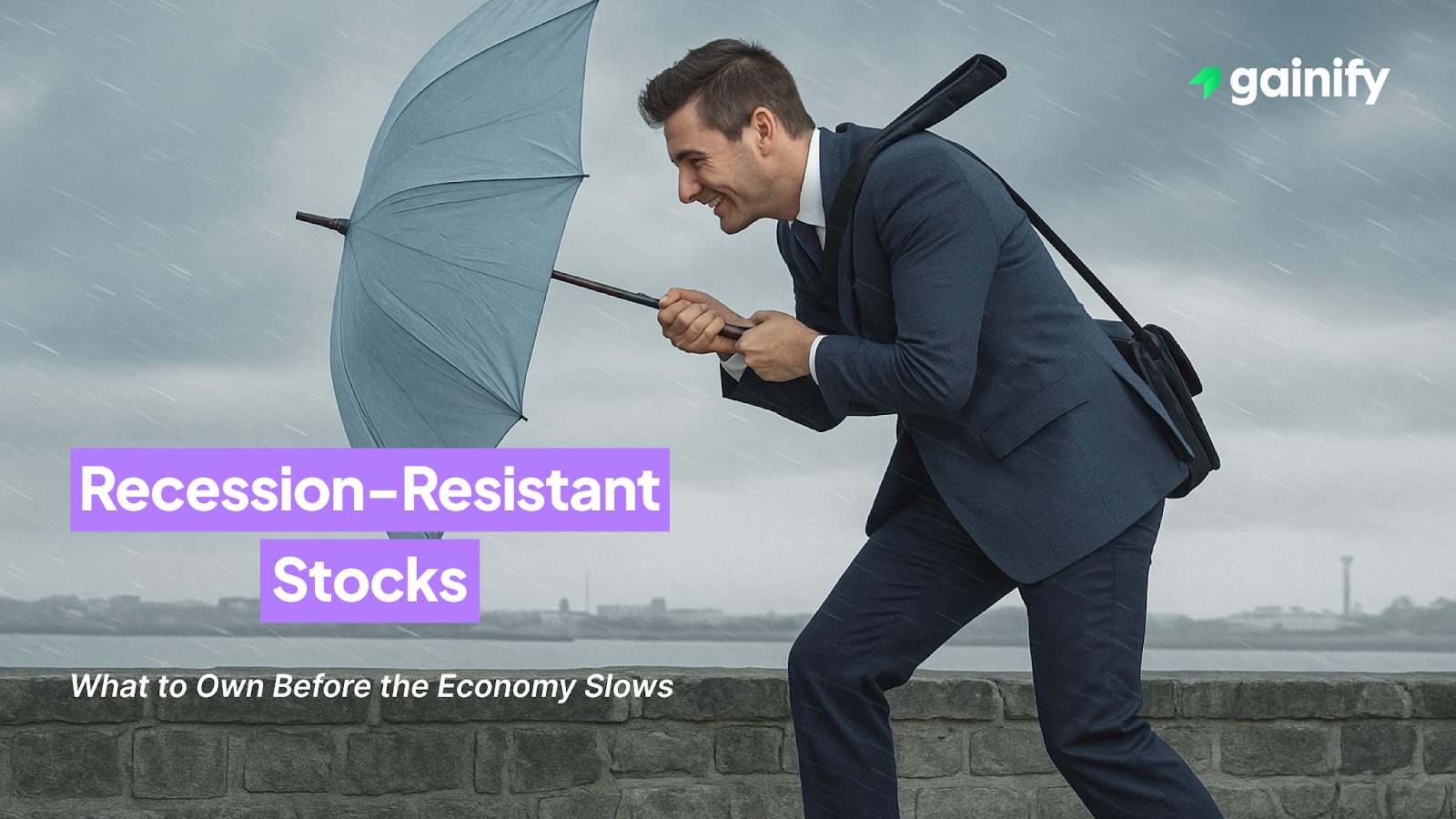Ever wondered why some years in the US stock market feel like smooth sailing while others turn into a roller coaster ride? One theory that attempts to explain this pattern is the 4-year presidential cycle stock market effect. Rooted in more than a century of historical data, this idea suggests that market performance often follows the rhythm of the U.S. presidential election cycle.
According to this theory, the four-year term of a president can influence stock market trends in surprisingly consistent ways. Some years tend to deliver stronger gains, while others are more prone to volatility and corrections. The connection between political decision-making and investor behavior has made the Presidential Election Cycle a popular talking point in financial circles.
But how reliable is this cycle? Can it actually shape your investment strategy, or is it just another myth that resurfaces every election year? More importantly, how should investors think about it in a world of rising interest rates, geopolitical instability, and evolving market dynamics?
In this article, we’ll dig into the historical performance data, look in more detail about the Presidential Election Cycle Theory, and analyze both the opportunities and the risks. We’ll also include a contrarian perspective to challenge conventional thinking. Whether you’re an active trader or a long-term investor, understanding how U.S. presidential elections influence financial markets can give you a sharper edge in evaluating today’s market landscape.
What Is the Presidential Election Cycle?
The Presidential Election Cycle Theory is a long-observed market pattern that links the four-year U.S. presidential term to fluctuations in stock market performance. First introduced by Yale Hirsch in the Stock Trader’s Almanac, this theory suggests that the 4-year presidential cycle stock market effect can create distinct return patterns depending on where we are in the election timeline.
The idea is that market gains are typically weaker in the first half of a presidential term and stronger in the second half, as the next Election Day draws closer. This pattern reflects how political incentives and policy timing can influence both economic behavior and investor sentiment.
Here is how the cycle generally plays out:
- Year 1: Post-Election Year – The newly elected president often introduces unpopular or difficult policies early on. These decisions can create market uncertainty, and returns tend to be modest or even negative.
- Year 2: Midterm Election Year – Historically, this is one of the most volatile periods in the cycle. Markets often experience corrections or downturns as the political landscape shifts. Some of the most notable bear markets have occurred in this phase.
- Year 3: Pre-Election Year – This is usually the strongest year for the stock market, with market indexes such as the S&P 500 and Dow Jones often posting above-average returns. Presidents often implement pro-growth or market-friendly policies to support the economy ahead of reelection campaigns.
- Year 4: Election Year – Returns are generally positive, although gains may be tempered by political uncertainty and campaign noise. Investors closely watch the direction of the White House and potential shifts in policy.
While not a guarantee, this recurring pattern has been observed across multiple decades and market cycles. Understanding where we are within the presidential cycle can provide useful context when assessing current market trends and setting expectations for near-term market performance.
Historical Performance: What the Numbers Tell Us
When analyzing the 4-year presidential cycle stock market effect, the historical data speaks volumes. According to data from StockCharts.com, the Dow Jones Industrial Average (DJIA) has demonstrated a consistent pattern in returns based on the four-year U.S. presidential term. These trends have held true over more than a century of market history, covering the period from 1901 to 2023.
Here is the breakdown of average annual returns by presidential cycle year:
Presidential Cycle Year | Average DJIA Return (1901–2023) | Average SPX Return (1945–2023) |
Year 1: Post-Election | +4.8% | +6.7% |
Year 2: Midterm | +4.0% | +3.3% |
Year 3: Pre-Election | +10.1% | +13.5% |
Year 4: Election Year | +6.0% | +7.5% |
In particular, the third year (pre-election year) has delivered the strongest returns. According to the CFA Institute, since 1928, the S&P 500 has produced positive returns in 78% of third years, with an average return of 13.5%, compared to a long-term average of 7.7%.
One nuance highlighted in recent analysis is the role of split government. Third years that follow a shift from unified party control to gridlock in Congress tend to perform even better, averaging 15.0% returns. This suggests that the cycle’s strength may have as much to do with congressional dynamics as presidential ones.
However, while the pattern is historically strong, real-world disruptions such as recessions, geopolitical events, and Federal Reserve policy shifts can break the cycle, which leads us to the next section.
Why Might the Cycle Work?
The 4-year presidential cycle stock market pattern is not just historical coincidence. There are several structural and behavioral reasons why it tends to repeat, even across different administrations and market environments.
1. Policy Timing and Political Incentives
Presidents often front-load difficult policy decisions such as spending cuts, tax reforms, or regulatory crackdowns during the first and second years of their term. These moves may be necessary for long-term goals but often create short-term uncertainty in financial markets.
By contrast, the second half of the presidential term, particularly the pre-election year, typically brings more market-friendly actions. Administrations have strong incentives to boost market performance and economic sentiment ahead of Election Day, which can include fiscal stimulus, tax relief, or expanded government programs. These actions tend to lift investor confidence and support market gains.
2. Behavior of Market Participants
Smart money pays attention to election cycles. Institutional investors, hedge funds, and portfolio managers often position ahead of expected policy moves. For example, if an administration is likely to pursue pro-business legislation or infrastructure spending, market participants may shift capital into sectors expected to benefit.
This collective positioning contributes to self-reinforcing market trends, as buying activity pushes prices higher in anticipation of political developments.
3. The Role of the Federal Reserve
The Federal Reserve plays a powerful, though often indirect, role in this cycle. While the Fed is independent, its interest rate decisions are made within the broader context of economic and political conditions. Historically, the Fed has tended to avoid major rate hikes during election years to preserve stability and avoid being perceived as politically biased.
This cautious stance can result in a more favorable environment for market indexes such as the S&P 500 and Dow Jones, particularly in the third and fourth years of the presidential term.
4. The Feedback Loop Effect
What ties all of this together is a classic feedback loop. Markets anticipate that government policy will become more accommodative ahead of elections. Investors adjust their strategies accordingly, which increases asset prices and reinforces the very cycle they expect. Over time, this behavioral pattern helps sustain the historical rhythm seen in the Presidential Election Cycle Theory.
The Contrarian View: Why the Cycle Doesn’t Always Hold
While the Presidential Election Cycle Theory offers an appealing narrative backed by long-term averages, it is far from infallible. Investors should understand the risks of relying too heavily on historical patterns without accounting for real-world complexity.
1. Crisis Years Break the Pattern
Several major disruptions have shown just how fragile the cycle can be when confronted by external shocks:
- 2008 (Midterm Year): Instead of a rebound, markets collapsed due to the global financial crisis, triggered by widespread credit failures and banking insolvency. The S&P 500 fell nearly 38% that year, completely ignoring any mid-cycle recovery expectations.
- 2020 (Election Year): The emergence of the COVID-19 pandemic led to a sudden bear market and historic volatility. Massive stimulus efforts followed, but only after a sharp 30% market drop in March. Clearly, U.S. presidential elections were not the primary driver of market behavior.
2. Interest Rates and the Fed Matter More
In today’s markets, interest rate policy by the Federal Reserve often carries more weight than election-year promises. Rapid shifts in monetary policy, especially during inflationary or recessionary periods, can completely overshadow traditional market timing indicators. When the Fed tightens aggressively, equity valuations compress, regardless of where we are in the 4-year presidential cycle.
3. Other Market Forces Are Often More Powerful
Beyond politics, the financial markets are influenced by a wide array of powerful forces. Energy prices, geopolitical tensions, corporate earnings, bond market volatility, and shifts in global monetary policy often exert far greater influence on market performance than election cycles. These factors can easily override even the most compelling election-year thesis.
Using the Presidential Election Cycle as your primary decision-making framework may lead to misplaced confidence or overlooked risks. While it offers historical perspective, it should be treated as supplementary context, not as a standalone investment strategy. Markets are complex, and reducing them to a single pattern rarely leads to durable results.
Should You Use the Presidential Cycle in Your Investment Strategy?
The Presidential Election Cycle provides valuable historical perspective, but it should not be seen as a guaranteed roadmap. Like any long-term pattern, it offers useful context, not certainty. Investors are better served using it as one piece of a broader, evidence-based investment strategy.
Here’s how to apply it thoughtfully:
- Monitor market sentiment around elections. Shifts in investor behavior often align with political expectations, especially in pre-election years when policy tends to favor growth.
- Combine with real-time data. Consider the cycle alongside current earnings reports, interest rate movements, and global economic indicators. Markets respond to what is happening now more than what happened historically.
- Avoid relying on political headlines. Campaign narratives and media noise can be misleading. Short-term market reactions are common, but they rarely justify strategic shifts on their own.
- Account for larger market forces. Long-term trends such as a secular bull market, inflation cycles, or central bank policy can outweigh the effects of an election. It is important to place the cycle within the full economic picture.
In summary, the 4-year presidential cycle stock market pattern can be a helpful guide for understanding how markets have behaved in the past. But successful investing comes from aligning historical awareness with present-day analysis and sound risk management.
FAQs: The 4-Year Presidential Election Cycle
Q: Is the Presidential Election Cycle a proven strategy?
A: It’s a well-documented pattern with over 100 years of data, but it’s not foolproof. It works more as a behavioral lens than a strategy.
Q: Which year typically offers the best market returns?
A: The third year (pre-election year) historically delivers the strongest market gains, with DJIA returns averaging over 10%.
Q: How do midterm elections impact the market?
A: Historically, midterm elections introduce uncertainty and market corrections. However, the 12 months following midterms tend to be strong.
Q: Does the Federal Reserve influence this cycle?
A: Indirectly. Interest rate policy can amplify or mute the effects of the presidential election, especially when rates shift quickly.
Q: Should I rebalance my portfolio based on the White House cycle?
A: Only partially. Political timing should never outweigh fundamentals, diversification, and risk tolerance in your investment strategy.
Final Thoughts
The 4-year presidential election cycle offers valuable insight into how U.S. presidential elections can influence the stock market. Historical trends show stronger market performance in pre-election years, but this pattern should not be viewed as a guarantee.
Successful investing requires a wide perspective. Politics is only one part of a much larger picture that includes interest rates, earnings, global events, central bank policy, and investor behavior. No single cycle can fully account for the complexity of today’s markets.
Let the presidential cycle serve as a helpful reference point, not a rulebook. Use it to inform your thinking, while staying focused on fundamentals and risk management.
Stay informed. Stay diversified. And remember, the White House is not a ticker symbol.



